Hello dear readers! Even a novice summer resident understands perfectly well that after Tomato care never ends. Rather, on the contrary, the most important period begins when plants need top dressing to form a powerful root system, accelerate growth, proper stem development and timely appearance of ovaries.
Top dressing of tomatoes has a serious impact on the full growth of the plant. It is very important to introduce the right substances in the correct dosage and in right time throughout the life of tomatoes and throughout all stages of growth, paying attention to each phase of development.
Many use exclusively organic fertilizers. To do this, they perform difficult and sometimes time-consuming actions and procedures for ripening, insisting, sifting and separating. Meanwhile, mineral supplements have been developed and put on the market a long time ago, which are no less effective than organic ones, which are easy to handle and easy to use.
Saltpeter remains the most popular and useful fertilizer. In addition, they began to sell it in online stores, and you don’t have to go for it, - I chose, ordered, brought. Nowadays, in general, many goods can be purchased without leaving home. This saves time and money because you do not have to travel to specialty markets or wander through hypermarkets. I buy a lot in the online store my-shop, and mineral supplements as well.
What is saltpeter
She happens:
- ammoniacal
- lime-ammonia
- porous ammonia
- calcium
- potash
- sodium
- magnesium
Such top dressing is always produced with a large addition of a wide variety of elements and is used depending on the needs of a particular climatic zone, type of soil. This is a useful mineral, but nitrate fertilizer, so it must be used correctly, and the dosage should be monitored.
Let's take a closer look at fertilizer, and also find out if it is possible to feed tomatoes with saltpeter.
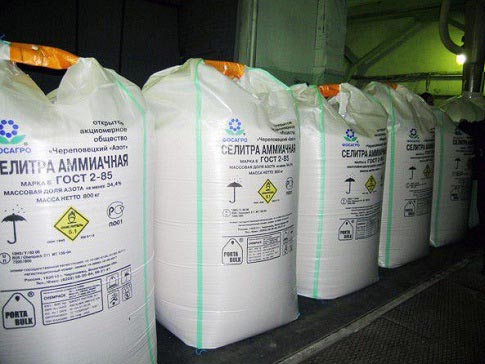
Ammonia fertilizer was developed by the very first of all. Its main function is to provide plants with nitrogen. Recommended commercially as a starter growth fertilizer suitable for most crops.
There is a subspecies of conventional top dressing - this is brand B ammonia. It is divided, in turn, into two varieties and is very convenient for home use for feeding flowers and vegetable seedlings, which simply need nitrogen due to short daylight hours.
Ammonium-potassium nitrate is popularly called Indian. She's great for spring feeding fruit trees, as well as introducing into the soil before sowing tomato seedlings and their subsequent top dressing.
Lime-ammonia is known as Norwegian, and is available both in the form of powder and in the form of granules. Contains calcium, potassium and magnesium. But there is one significant disadvantage: this product is processed with fuel oil. Therefore, it is perfectly stored, and, thanks to strong granules, it does not cake at all, but fuel oil substances remain in the soil for a long time and their benefits to humanity have not yet been proven). But it is not explosive and is transported by any means of transport, from which we can conclude that, despite all the benefits of its composition, it benefits only those who distribute it.
Calcium nitrate is produced in liquid, finished, and dry form. The liquid solution is called "Ammoniazed Calcium Nitrate". Contains calcium and nitrogen, practically does not acidify the soil, unlike urea.
Magnesium is used as a source of magnesium for plants, good for vegetables and legumes. Stimulates plant photosynthesis. Compatible with calcium nitrate.
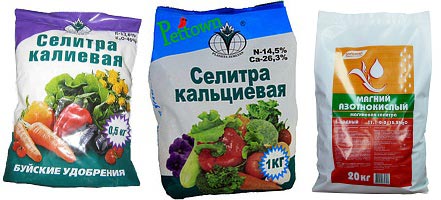
Potassium nitrate is commonly known as mineral fertilizer for crops that do not like chlorine, including tomatoes. It accelerates the growth of plants, strengthens the immune system and enhances the sucking power of the root system.
Sodium nitrate is rich in nitrogen and sodium, and is good during the growing season of the plant. It is not recommended to apply from autumn and use on solonetzic soils. And in greenhouses, this fertilizer cannot be used!
Porous ammonia is not a fertilizer at all and is very explosive.
It follows that not every saltpeter is suitable for feeding a tomato.
How to feed tomatoes with saltpeter
Feeding tomatoes still in the form of seedlings is good, but the ash does not contain nitrogen. Therefore, per square meter of sown area, you will need 2 tablespoons of ash and 10 mg of ammonium nitrate per three liters of water. This solution can be applied again after 2 weeks, and each time top dressing should be accompanied by warm watering. It is important to ensure that the mixture does not fall on the leaves, in order to avoid burns.
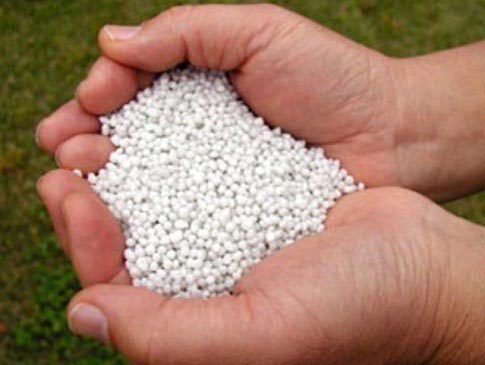
Ammonium nitrate contains more than 30% nitrogen and is good in symbiosis with potash and phosphate fertilizers. It is used not only in the initial stage of development of tomatoes, it is indispensable when the first ovaries appear at the rate of 2-2.5 kilograms per 100 square meters and is often mixed with potassium sulfide in the proportion of 25 grams of saltpeter, 30 - potassium per 10 liters of water. Water only under the root or in the furrow.
Magnesium nitrate is indispensable during the fruiting of tomatoes. Magnesium is actively involved in the formation of fruits, nourishes and protects them, and its absence rewards tomatoes with yellow foliage with bright green veins. Every 2 weeks we carry out top dressing of tomatoes, spreading 25 grams of raw materials into a bucket of water.
Calcium nitrate is an excellent source of calcium. Calcium is responsible for the most important functions of plants, such as the development of the root system of tomatoes, the stimulation of metabolism and the work of enzymes. It also improves the physical properties of the soil. In liquid form, this fertilizer is convenient and useful to use. Top dressing is carried out during flowering and fruiting.
I do not say goodbye to you, wait for new interesting flocks on my blog!
Happy harvest and see you soon!
With all respect, Andrew
Enter your e-mail and receive new articles by mail:

Among the large number of fertilizers on the modern market, one of the leaders is calcium nitrate - a powerful tool for correcting the development of vegetable, berry, fruit crops and flowers.
Timely feeding with a solution of calcium nitrate has a beneficial effect on the growth parameters of the herbaceous part of the plant and, as a result, on productivity.
1 Features of calcium nitrate
Calcium nitrate, or calcium nitrate, is a crystalline salt mixture that is perfectly soluble in water and is used as root and foliar top dressing of cultures loyal to this microelement.
The composition of the fertilizer contains calcium and nitrogen in the ratio of 19% and 13%, respectively, which distinguishes this type of top dressing from nitrogen mixtures. It practically does not affect the level of soil acidity and can be actively used on almost all types of soil. The most effective are top dressings with calcium nitrate in soddy-podzolic soils.
Despite the fact that calcium is not one of the components of the complex of microelements vital for plants, it plays a key role in the process of nitrogen assimilation.
Other benefits of calcium nitrate include:
- stimulation of vegetation quality;
- absorption of excess manganese and other metals in the composition of the soil;
- soil deacidification.
With a lack of calcium, the root system of plants is primarily affected - it ceases to absorb the moisture necessary for the culture and gradually rots, in most cases causing death.
Calcium nitrate is most effective when applied to the soil in the spring during the period of digging the soil. Autumn fertilizer is not recommended, since in the process of snow melting, all the nitrogen contained in the saltpeter will gradually be washed out, as a result of which pure calcium can become one of the reasons for inhibition of plant growth.
Today, calcined saltpeter is produced in two main forms - granular and crystalline. The effectiveness of both forms is approximately the same, the only advice is that if it is possible to purchase granular nitrate, it is better to use it. The crystalline form has increased hygroscopicity, somewhat dusty during distribution over the site and requires compliance with measures personal protection respiratory tract and mucous membranes.

Calcium nitrate contributes to:
- faster seed germination as a result of activation of enzymatic activity;
- effective development of the ground part of plants due to the stimulation of the formation of green mass;
- the formation of a full-fledged, resistant to various external factors of influence of the root system;
- development of immunity to temperature changes;
- improving the taste of fruits.
1.1 Preparation of calcium nitrate
Calcium nitrate can be purchased ready-made or, if the proportions are correctly maintained, you can cook it yourself. To do this, you need to make a small installation of several bricks (at the farthest end of the site, since the mixture emits an unpleasant odor during cooking), take an aluminum container with a volume of 3-4 liters and make a fire.
In a saucepan in 500 ml of water, stir 300 g of ammonium nitrate, put it on the bricks at the epicenter of the fire and bring to a boil. Next, 140 g of slaked lime is introduced into the mixture in small portions, the cooking process should be extended for 30-35 minutes.
This method of preparing nitrate is one of the simplest and most economical. In the process of preparation, it is necessary to use a respirator and protective gloves.
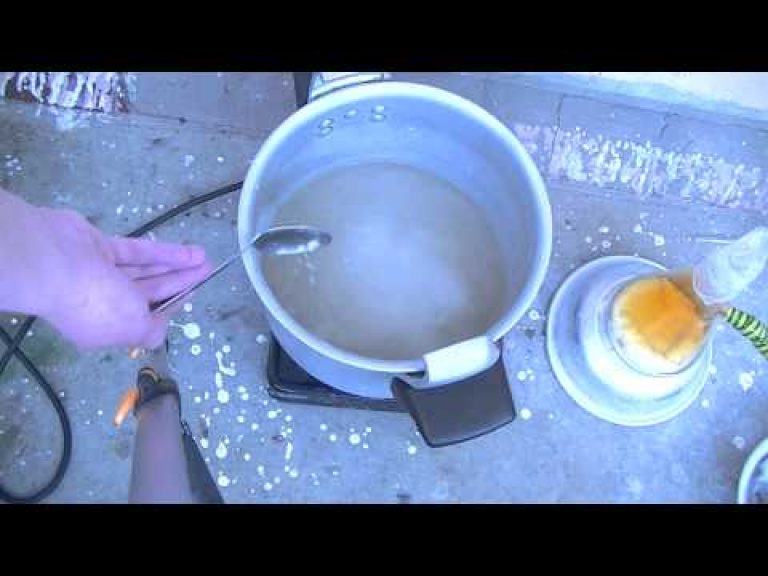
Calcium nitrate is ready when the mixture ceases to spread a sharp aroma, reminiscent of ammonia. At this stage, extinguish the fire and allow the mixture to cool. At this time, a dark precipitate forms at the bottom of the pan, and the pure liquid fraction is our fertilizer, which should be diluted in accordance with the proportions that are optimal for a particular type of crop.
2 The use of calcium nitrate
The use of calcium nitrate is more popular in small farms - complex fertilizers are more often used on an industrial scale. On household and private garden plots it is used as a top dressing for seedlings, vegetable and berry crops during the growing season, as well as flowers, in particular, for roses.
Features of the fertilizer allow it to be used both for root and foliar top dressing. The first type of application is more in demand in the care of fruit trees or bushes - in this case, an irrigation solution is prepared, which is applied in the near-stem ring.
Foliar feeding with calcium nitrate, or spraying, is most beneficial for seedlings. vegetable crops, in particular, tomato, for roses, garden strawberries and strawberries respond well to it. Getting on the leaf, useful microelements in the mixture are quickly absorbed by the herbaceous part of the plant and get to all organs of the plant, being absorbed quickly enough.
The most useful periodic spraying with a solution of calcium nitrate for cucumbers. They can be carried out with an interval of 10-12 days from the moment the 3rd true leaf appears and until the stage of active fruit formation. The optimal dosage for this culture is 2 g / 1 liter of water.
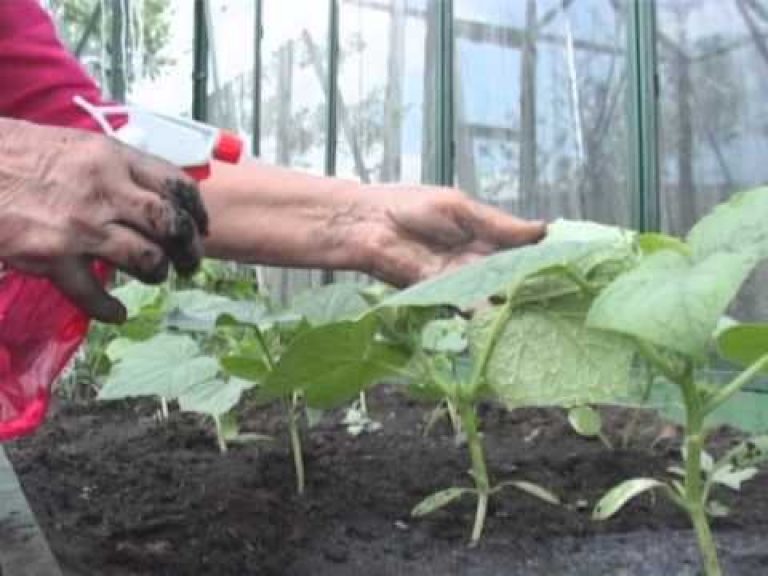
Top dressing of tomatoes can also be cyclical, the first procedure can be performed even at the seedling stage and after 1-1.5 weeks after planting in open or closed ground. Calcium nitrate is a universal remedy for tomatoes - it not only promotes active growth and tillering, but also prevents blossom end rot, repels thrips and mites due to a prolonged effect.
2.1 Several ways to use salt and calcium nitrate in the garden (video)
Every gardener dreams of getting from his garden good harvest. In order for a plant to be healthy and give tasty and beautiful fruits, it must receive a sufficient amount of mineral and organic substances, including nitrogen. Unfortunately, not every soil has the necessary composition. You can correct the situation with the help of specially designed dressings and fertilizers. Today we will talk about such a necessary fertilizer for tomatoes as calcium nitrate.
The benefits of feeding a tomato with saltpeter
Calcium nitrate is a salt of nitric acid. This is a mineral, not organic fertilizer, which contains 19% calcium and 13% nitrogen. She has another, less common name - calcium nitrate.
Potassium nitrate is sold as a dry matter. This is a salt that is hygroscopic, so it is advisable to store it in sealed packaging.
Some gardeners believe that the use of this is not at all necessary, as the plant needs only nitrogen, potassium and phosphorus. This is an erroneous opinion! After all, it is calcium that helps the absorption of nitrogen by tomatoes. One of the important qualities of calcium nitrate is that it does not oxidize the soil, although it contains a considerable dose of nitrogen. This fertilizer finds its application for all types of soils, but it is especially necessary for podzolic and soddy-podzolic areas.
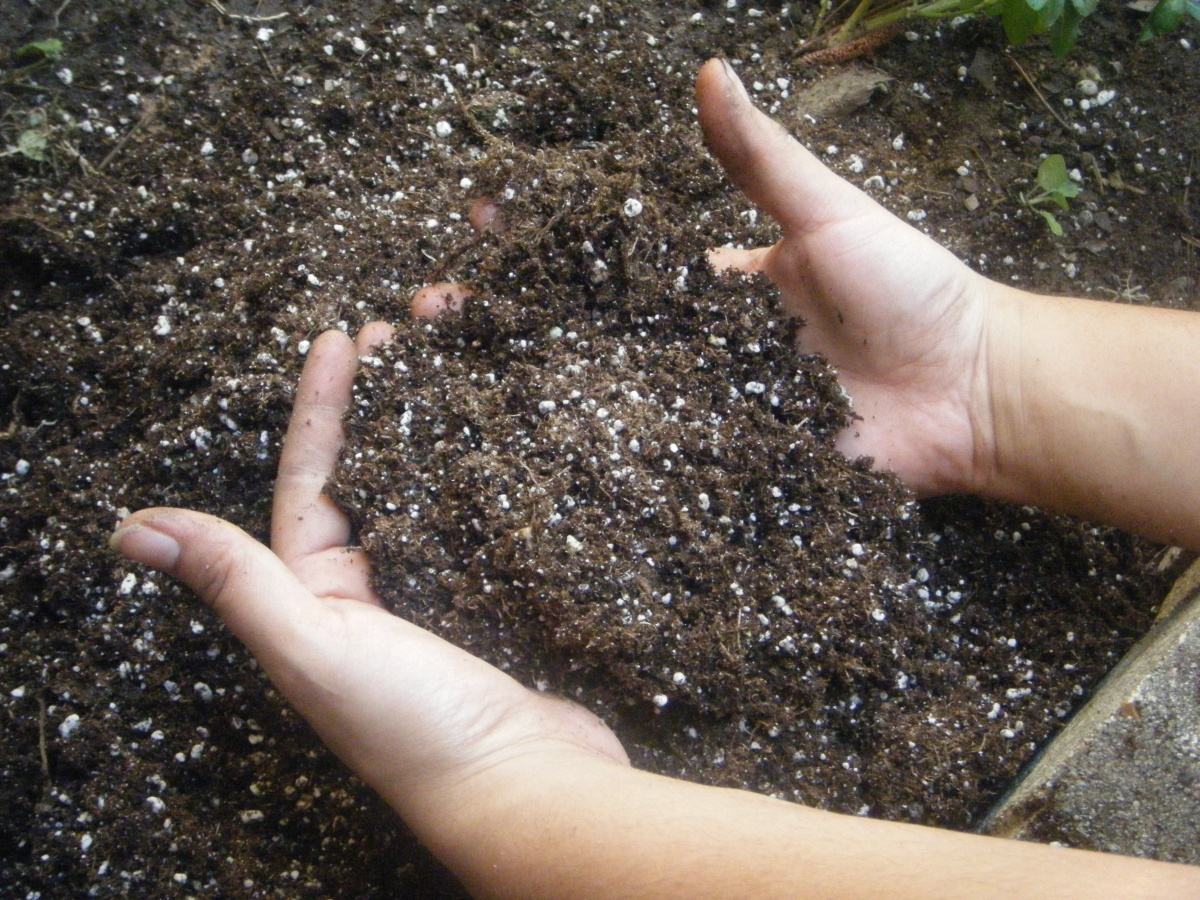
What does fertilizing a tomato with calcium nitrate give:
As you can see, calcium nitrate is simply an indispensable fertilizer that not only improves the general condition of tomatoes, but also neutralizes the harmful effects of excess manganese and iron salts. However, if applied incorrectly and untimely, this top dressing can play a cruel joke on you, and the plant will die.
When to make fertilizer tomato with nitrate
In order for fertilizer with saltpeter to bring only benefits and no harm to tomatoes, you need to know when it is better to do it. There aren't many recommendations here.
It is best to fertilize the soil with calcium nitrate in the spring, just before digging the site. If you decide to do this in the fall, then it is better to abandon this idea, because after heavy autumn rains, as well as a long winter snowfall, all calcium and nitrogen salts will be washed out of the soil and there will be no benefit from such top dressing. Foliar top dressing of tomatoes with saltpeter is carried out in the first half of the growing season. That is, until the flowers appear. It is better to do this a week after transplanting seedlings into open ground or into a greenhouse.
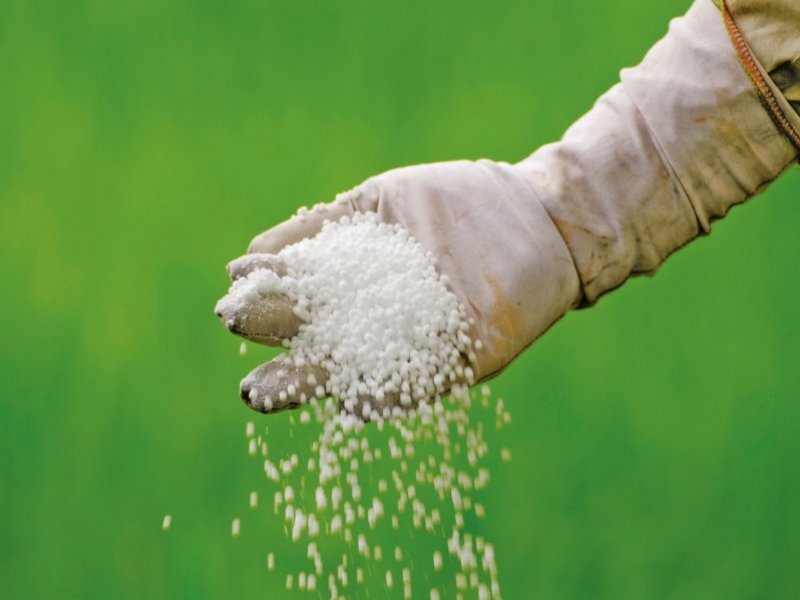
In some cases, unscheduled treatment of tomatoes with calcium nitrate may be required. It helps to cure plants from a number of diseases.
If you did not have time to fertilize the soil in the spring, then you can do this in the process of transplanting tomatoes into the ground. To do this, a handful of the substance is thrown into each hole. By the way, this method is also acceptable for cabbage.
How to fertilize tomatoes with saltpeter
Fertilize tomatoes with calcium nitrate should be very careful. Otherwise, you risk not helping the plant, but harming it. The first time to use calcium nitrate is in the spring. Before digging up the area where the tomatoes will grow, it must be sprinkled with granules of this fertilizer. Then you can safely drip the soil, while the saltpeter will be evenly distributed over it.
Do not confuse calcium with ammonium nitrate. These are two completely different things, the latter is called urea in a different way. By the way, there is an Indian fertilizer that combines these two nitrates.
Before planting seeds, the ground should also be watered with a solution of calcium nitrate. In this case, about 10 g of dry matter per 1 square meter is taken. You do not have to immediately dilute it with water, you can simply distribute a small amount of saltpeter on the soil. Thus, when watering, calcium and nitrogen will interact with the seeds, and they will germinate faster.
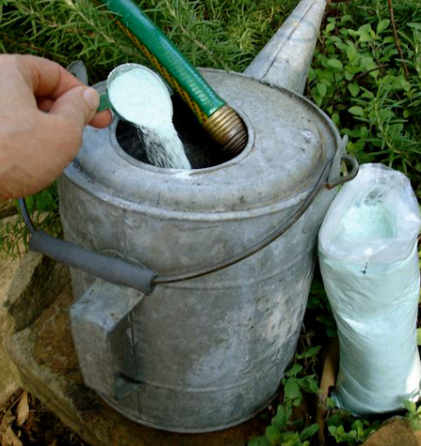
During the growing season, it is also necessary to fertilize plants with mineral and organic fertilizers, including saltpeter. When you transplant seedlings outdoors, add a handful of calcium nitrate granules to each well. However, not all experienced gardeners approve this method.
Further, the plants are fed every two weeks. Of course, you don’t need to think that the use of calcium nitrate will save you from all misfortunes; for tomatoes, you must definitely use other fertilizers. For regular feeding of tomatoes, with a break of two weeks, use 25 g of saltpeter diluted in 12 liters of water. This composition needs to be watered with vegetable crops.
Foliar top dressing of tomatoes with calcium nitrate
Do not limit yourself to just feeding the roots, tomato leaves also need care. It is nitrogen and calcium that tomatoes need during the growing season. Calcium helps to absorb nitrogen, due to which the roots grow, and the newly transplanted plant strengthens in its hole. It is possible to spray tomatoes only until the first ovaries appear. Further, spraying must be stopped, otherwise your crop will simply be dangerous to eat, as nitrates tend to accumulate in fruits.

How is foliar top dressing of tomatoes done:
- 25 grams of granular calcium nitrate is diluted in 1.5 liters of water;
- The liquid is poured into a spray bottle and shaken well;
- Plants are treated with this amount of solution.
This amount of solution is enough for only 1 square meter, that is, approximately 3 to 6 tomato bushes.
The first feeding of tomatoes after planting (video)
Feeding with calcium nitrate is simply necessary for tomatoes growing in our unstable climate. Fertilizing plants with this substance will help you avoid a lot of problems.
Attention, only TODAY!
5Ca (NO 3) 2 + NH 4 NO 3 x 10H 2 O, (N15, Ca26)
calcium nitrate- it is physiologically alkaline fertilizer, it dissolves well in water, hygroscopic. Contains water-soluble calcium, which is readily available for plant nutrition. Best used on acidic sod-podzolic soils. It is characterized by fast action even under adverse climatic conditions: low temperature, excessive humidity, drought, low pH. The use of calcium nitrate promotes the absorption of calcium, magnesium, potassium and other cations due to nitrate nitrogen, which is part of the fertilizer. The high efficiency of calcium nitrate is observed when applied locally to the soil to a depth of 8-10 cm, although production experience confirms good results when applied to the surface. The loss of nitrate nitrogen fertilizer during use is negligible.
The main agrochemical features of calcium nitrate:
- stimulates the development of the root system (the active zone of the roots - root hairs), vegetative growth, the development of agricultural and ornamental crops (sugar beet, fodder beet, table beet, potatoes, winter and spring rapeseed, grain and silage corn, soybeans, cabbage, tomatoes, cucumbers, beans , parsley, apple trees, strawberries, roses, chrysanthemums, carnations);
- improves the formation of membranes and plant cell walls;
- activates the activity of enzymes and metabolism in plants;
- improves the processes of photosynthesis, transportation of hydrocarbons and nitrogen assimilation in plants;
- increases the resistance of plants to stress factors environment, fungal and bacterial diseases arising from calcium deficiency (creamy rot of tomatoes, peppers, browning of potato pulp, bitterness of apple fruits);
- improves the keeping quality of fruits and vegetables during storage and transportation;
- increases yield by 10-15%, improves presentation and taste qualities vegetables and fruits;
- physiological alkaline fertilizer (0.2 C. CaCO 3 per 1 centner of fertilizer), which is effective on acidic and alkaline soils.
- Calcium nitrate is also used for foliar puff nutrition at a concentration of 0.5-2.0%, especially when symptoms of calcium deficiency appear in plants. High efficiency from foliar feeding with calcium nitrate is observed in regions with a hot arid climate and high solar insolation. Recommended for fertilizing beets, vegetables, rapeseed, wheat, etc.
Do not mix calcium nitrate with fertilizers containing phosphates and sulfates. .
Nitrabor
5Ca(NO 3) 2 + NH 4 NO 3 x 10H 2 O + B, (N15, 5 Ca26, B0)
Nitrabor- it's unique complex fertilizer, which is calcium nitrate enriched with boron, contains nitrogen in the nitrate form, water-soluble calcium and boron. The fertilizer is physiologically alkaline, granulated. Nitrabor is a special fertilizer that is used to feed crops that are demanding on boron (beets, rapeseed, flax, potatoes, sunflowers, corn, legumes). perennial herbs, hop, vegetable, fruit) and on soils with a low content of available boron.
Agrochemical features of Nitrabor:
- promotes growth, development of generative organs, root system and growth points in plants;
- increases the resistance of crops to fungal and bacterial diseases;
- prevents falling fruit ovaries, the appearance of core rot, beet hollowness, cracking of carrot roots and other diseases that occur due to boron deficiency;
- increases the yield of crops by 10-15% and improves the quality of their marketable products, increases the content of sucrose in sugar beet root crops and the technological yield of sugar at sugar factories;
- applied locally to the soil or superficially on early stages development and in the second half of the growing season, depending on the biological characteristics of crops;
- exhibits high efficiency on soils and peat-soil substrates with a high content of organic matter and on soils where pH>6.6.
Highly effective fertilizer on soils with a humus content of less than 2% and where the boron content is below 0.1 mg/kg of soil. The recommended application rates are 0.5-3 Ts./1ha. It is applied locally to the soil for root feeding and superficially by spreading. It is not recommended to use nitrabor for foliar feeding and in drip irrigation systems.
udec.ru
Calcium nitrate: the use of fertilizer, top dressing
Calcium nitrate, or calcium nitrate, is a fertilizer that is widely used in agriculture. It is produced in the form of a crystalline salt, and is highly soluble in water. Contains in its composition 19% calcium, and about 13% nitrogen. Calcium nitrate (another name for this substance) almost does not acidify the soil in the beds, which compares favorably with its urea, and most other nitrogen fertilizers. This property allows the use of Ca(NO 3) 2 on various types soils, but it works especially effectively on soddy-podzolic soils. Calcium nitrate is a nitrate fertilizer, but with strict observance of the terms of application and dosages, it does not have a negative effect on the human body, and brings great benefits to the crop.
Properties
Many gardeners often neglect the use of calcium nitrate when fertilizing their plot. Yes, calcium is not part of the NPK complex, which includes vital substances. But at the same time, It is calcium that helps to fully assimilate nitrogen, the main substance from the composition of NPK - a complex that ensures the active growth and development of all plants.
A very important property of calcium nitrate is that it is considered the best fertilizer for acidic soils. This fat has a revitalizing effect on plants, contributing to their quality vegetation, as it absorbs excess manganese and iron from the soil, metals that are found in acidic soils in large quantities.
The lack of calcium, first of all, affects the root system. She no longer receives the required amount of nutrients. The local balance is disturbed, the roots stop absorbing the moisture that comes to them, and rot. After this happens, the whole plant may die. To avoid negative consequences, it is necessary to make this top dressing in a timely manner.
The instructions for use, which is attached to fertilizers containing calcium nitrate, say that they must be applied in the spring, for digging the soil. In autumn, it is absolutely not worth using this fat, since all the nitrogen contained in it will be washed away during snowmelt, and only calcium will remain from a balanced complex of useful elements, which without nitrogen is not very useful, and most often is simply harmful.
Calcium nitrate has been produced in the last few years in two forms - granular and crystalline. Since the crystals of this salt are highly hygroscopic, if there is a choice, it is better to purchase a granular form, which is much more convenient to handle, does not produce dust during application, and absorbs less moisture from the surrounding air.
Application
The use of calcium nitrate in private households is practiced more often than in industrial agriculture. It is not very convenient when transporting in large volumes, but for individual use, it can be bought in small packages of 1-2 kg. This fertilizer not only creates a nutrient medium for plants, but also protects them from various ailments, so it is recommended for private use in summer cottages and in subsidiary household plots.
Calcium nitrate is necessary for:
- Qualitative formation of green mass. It accelerates photosynthesis in plants, promotes the qualitative formation of cell membranes, and, accordingly, the walls of the plant. Calcium, which is part of this fat, contributes to the complete absorption of nitrogen.
- The introduction of this fertilizer into the soil before planting significantly accelerates the germination of seeds and tubers, due to the activation of enzyme activity;
- Calcium nitrate contributes formation of a healthy root system resistant to diseases, fungi and bacteria;
- Calcium nitrate helps the plant survive sudden changes in temperature, contributes to the successful wintering of perennials;
- Also this tuk improves the taste, quality and quantity of the crop, and shelf life of commercial products.
As a nitrogen-calcium supplement for pre-sowing application, this agrochemical is ideal, since it is nitrogen that plants need at the initial stage of growth, and calcium helps to absorb it efficiently. It is also used for routine plant nutrition during the first half of the vegetative period, spending foliar top dressing.
Especially useful foliar top dressing for cucumbers. The first spraying of this culture is done after the appearance of the third leaf on the greens, and this procedure is repeated with an interval of 10 days, until the onset of the phase of active fruiting. To prepare a solution, 2 g of calcium nitrate is diluted in 1 liter of water, used immediately. This treatment will prevent the appearance of rot in the root zone of the plant.
For the same purpose they spray tomato seedlings, a week after transplanting it into the ground. The use of calcium nitrate perfectly protects young plants from blossom end rot, which is especially susceptible to tomato bushes, protects them from ticks, thrips and slugs. Also, treatment with a solution of calcium salt gives a prolonged effect for the tomato - even after stopping its use, the bushes retain strong immunity, and ripening tomatoes remain protected from the appearance of black rot.
Another "lover" of calcium nitrate is cabbage. Fertilizer can be used for seedlings by feeding it under the root (2 g per 1 liter of water). But when making this fat under the cabbage, there is a trick. Everyone knows that cabbage will not grow on acidic soil. But, at the same time, she loves calcium nitrate. So how do you reach a compromise? In this case, the crystals are not introduced into the soil when digging it, but directly into the hole for cabbage (1 tsp without top), and lightly sprinkled with a thin layer of earth before lowering the root of the plant there. Such a tricky "pie" gives the best effect when growing cabbage, as the plant is actively overgrown with leaves, quickly begins to twist its head and, most importantly, does not get sick.
Under other garden and horticultural crops, this type of saltpeter is applied in the form of liquid dressings. The following dosages for root dressings are recommended:
- Strawberries (garden strawberries) - 25 g per 10 liters. Top dressing is carried out strictly before flowering.
flower food
Calcium nitrate is one of the best fertilizers for flowers. This mineral supplement helps to solve two of the most basic problems - high-quality formation of green mass and protection against rot. In fact, both annuals and perennials begin to come into contact with the ground by the middle of the season. After watering, wetting is formed in this place, which then develops into putrefactive formations. This creates a favorable environment for the reproduction of pests that significantly spoil appearance plants. The use of calcium nitrate helps to combat this phenomenon. Penetrating into the stems, it increases their resistance to negative factors, sanitizing the plant and protecting it.
perennial phlox- one of the most common flowers throughout the Russian Federation. They are unpretentious, require little care, and look very impressive in color. But, despite the fact that these flowers are undemanding, if they are not fed, the flower stalks become smaller and lose their decorative qualities. Calcium nitrate is applied to phloxes as the first top dressing of the season, in the form of a solution, twice, with an interval between top dressings of 10 days. For its preparation, calcium nitrate is dissolved in water in a proportion of 2 g per 1 liter. Further it is used for foliar top dressing.
petunias. A solution of this fertilizer (1 tsp per 1 liter) is used for flower seedlings to strengthen its fragile “skeleton”. After all, one of the main negative factors that prevents the quality of growing this plant in open field- fragility of leaves and stems. Gusts of wind are the scourge of young seedlings. In order to protect it at first, while it is getting stronger, after transplanting, the petunia is fed again, under the root, with a solution of calcium nitrate of the same concentration as for seedlings.
Do-it-yourself calcium nitrate
This fertilizer can be made independently. To do this, you need to take the more common ammonium nitrate, and slaked lime. You will also need a couple of bricks (to build the structure), an aluminum pot, and firewood. It is better to “cook” calcium nitrate a little longer from residential buildings, since an unpleasant odor is released during the reaction. It is advisable to protect the respiratory organs with a household respirator, and hands with gloves.
The manufacturing process looks like this: 300 g of ammonium nitrate and 500 ml of water are placed in a 3-liter saucepan. Then the resulting substance is placed in a fire on bricks, and brought to a boil. Hydrated lime (140 g) is gradually added to the liquid, and this must be done in small portions, and the whole process of adding fluff should be stretched for 25-30 minutes.
When the substance boiled over the fire ceases to emit a sharp ammonia smell, calcium nitrate is almost ready. The fire must be extinguished, and wait for the formation of a dark-colored precipitate of lime. After the clean part is drained into a separate container, this is the mother solution of calcium nitrate. It can be stored like this. When applied to the soil, the mother liquor must be diluted according to the type of plant, and the type of top dressing or spraying.
udobreniya.info
Calcium nitrate or calcium nitrate is a fertilizer.
Calcium nitrate / from top rot /.File:///C:/Users/AV-sys/Desktop/Kash/1_Agrohomokaty_mineralka.pdf
When planting cabbage
http://dacha.wcb.ru/index.php?showtopic=19476
A very good water-soluble fertilizer, which, unlike urea, almost does not acidify the soil, foliar top dressing for cucumbers is especially useful. It is best to apply before active fruiting to prevent blossom end rot in tomatoes, on cucumbers it helps to protect against mites.
Calcium nitrate on Tsvetochnoy is advised to water the petunia, it forms the "skeleton" of the seedlings. But tomatoes perceive it perfectly. True, I bred for foliar dressings: 1 teaspoon per 1 liter. The resulting solution is 50 ml (glass) for about 1 liter of water.
http://agroplus-group.ru/node/881
http://udobreniya.info/promyshlennie/kalcievaya-selitra/
Especially useful foliar top dressing for cucumbers.
The first spraying of this culture is done after the appearance of the third leaf on the greens, and this procedure is repeated with an interval of 10 days, until the onset of the phase of active fruiting.
To prepare a solution 2 g of calcium nitrate is diluted in 1 liter of water, apply immediately. This treatment will prevent the appearance of rot in the root zone of the plant.
For the same purpose spraying tomato seedlings, a week after transplanting it into the ground.
The use of calcium nitrate perfectly protects young plants from blossom end rot, which is especially susceptible to tomato bushes, protects them from ticks, thrips and slugs. Also, treatment with a solution of calcium salt gives a prolonged effect for the tomato - even after stopping its use, the bushes retain strong immunity, and ripening tomatoes remain protected from the appearance of black rot.
Another "lover" of calcium nitrate is cabbage. Fertilizer can be used for seedlings by feeding it under the root (2 g per 1 liter of water). But when making this fat under the cabbage, there is a trick. Everyone knows that cabbage will not grow on acidic soil. But, at the same time, she loves calcium nitrate. So how do you reach a compromise? In this case, the crystals are not introduced into the soil when digging it, but directly into the hole for cabbage (1 tsp without top), and lightly sprinkled with a thin layer of earth before lowering the root of the plant there. Such a tricky "pie" gives the best effect when growing cabbage, as the plant is actively overgrown with leaves, quickly begins to twist its head and, most importantly, does not get sick.
Under other garden and horticultural crops, this type of saltpeter is introduced in the form of liquid supplements.
Strawberries (garden strawberries) - 25 g per 10 liters. Top dressing is carried out strictly before flowering.
Vegetables (tolerant to calcium) - 20 g per 10 liters. Before flowering.
Fruit trees, apple trees, shrubs - 25-30 g per 10 liters. Before bud break.
Calcium nitrate is compatible with many fertilizers, except for simple superphosphate, with which it cannot be applied.
perennial phlox if they are not fed, the peduncles become smaller and lose their decorative qualities.
Calcium nitrate is applied to phloxes as the first top dressing of the season, in the form of a solution, twice, with an interval between top dressings of 10 days. For its preparation, calcium nitrate is dissolved in water in a proportion of 2 g per 1 liter. Further it is used for foliar top dressing.
Calcium nitrate is also used to feed the pet of many flower growers. middle lane – petunias. A solution of this fertilizer (1 tsp per 1 liter) is used for flower seedlings to strengthen its fragile “skeleton”. After all, one of the main negative factors that prevents the quality of growing this plant in the open field is the fragility of the leaves and stems. Gusts of wind are the scourge of young seedlings. In order to protect it at first, while it is getting stronger, after transplanting, the petunia is fed again, under the root, with a solution of calcium nitrate of the same concentration as for seedlings.
You can make this fertilizer yourself. Read here
Is calcium nitrate the same as potassium nitrate????
Mikhail Mukanov
Do you think calcium is the same as potassium?
No. Calcium - calcium nitrate Ca(NO3)2
Potassium (potassium) - potassium nitrate KNO3
From a household point of view, calcium nitrate can only act as a nitrogen fertilizer, potassium nitrate can act as nitrogen and potassium fertilizers (potassium, unlike calcium, plants need in significant quantities). But in calcium nitrate there is more nitrogen by mass, and it is better as a nitrogen fertilizer. If you plan to use it as a nitrogen fertilizer, then 10 grams of potassium in terms of nitrogen content is equivalent to 6.5 grams of calcium
Get in hozmage and that and more.
In pyrotechnics, calcium nitrate can replace potassium nitrate to a limited extent, in principle, both are oxidizing agents. You need to look at the specific composition of TOS. At one time, I tried to replace potassium with calcium when cooking "caramel" - it turned out, to put it mildly, not very well. In general, if it is difficult to get potassium - recalculate the proportions according to the reaction equations, experiment with the replacement, mb, it will work
Yuri Nikolaevich
Not the same thing, potassium and calcium are different chemical elements.
Rain
well, damn it, give it up! Is lead the same as gold?
Grigory Rinberg
Salts of nitric acid are also called nitrates: ammonium nitrate, potassium nitrate, sodium nitrate, calcium nitrate. Saltpeters differ in their properties and compositions.
Morgana
Potassium nitrate is a very common ingredient different types gunpowder.
Calcium nitrate is used as an additive in concrete, as a fertilizer, for the preparation of brine in refrigeration, in the production of reagents, fiberglass.
There is a difference?
Zhanna S
From the incomprehensibly unenlightened,)
Che with such a question in "Garden, garden."
We are talking about chemistry, but not at all about gardening and not about plants at all ... .
Vera
At the chemical store. But first you need to read a textbook on inorganic chemistry.
The versatility of this fertilizer allows it to be used for vegetables and fruits, fruit trees and shrubs, calcium nitrate shows excellent efficiency on soils of various composition, and especially on sod-podzolic soils. We will tell you about the advantages and features of the use of this fertilizer.
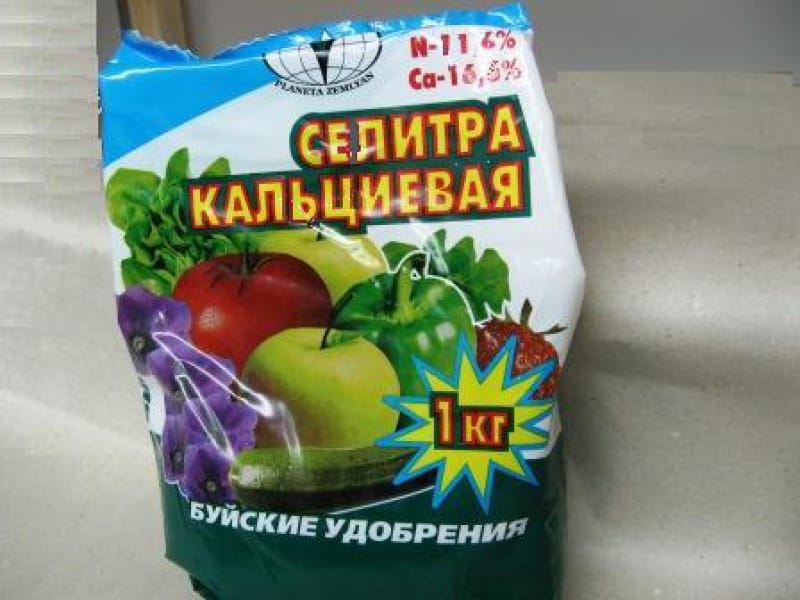
Calcium nitrate is a widely used fertilizer containing nitrogen and calcium. Due to the high efficiency of this top dressing and its complete environmental friendliness, it is used by thousands of summer residents and gardeners.
One of the main advantages of using this fertilizer is its environmental friendliness. This top dressing does not lead to acidification of the soil, and if the dosages are observed, this nitrate fertilizer does not have any negative effect on chemical composition harvested crop.
The presence of calcium in the composition of top dressing allows plants to easily absorb various useful trace elements from the soil. This ensures active growth and the maximum possible fruiting of the erected horticultural crops.
When using an agrochemical on acidic soils, plants revive, and top dressing effectively absorbs excess metals, iron and manganese in the soil. Thus, growth is activated, and the possibility of obtaining a quality crop is ensured.
We fertilize the earth with calcium nitrate
The first application of this fertilizer is made in early spring when digging the soil for planting. In the following spring, it is also recommended to apply this fertilizer with watered water, which will activate fruiting. But to apply this agrochemical in the fall is useless. The nitrogen contained in top dressing is quickly washed out of the soil, and calcium alone without other trace elements in the soil becomes simply useless.
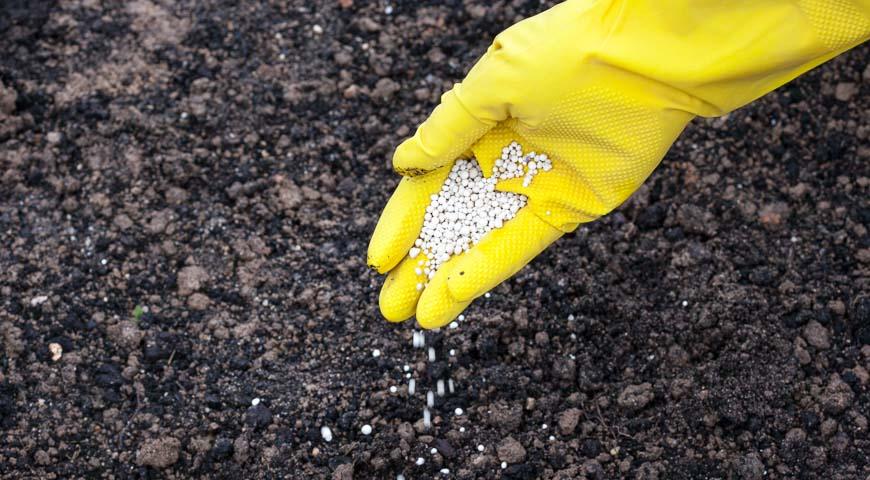
In specialized gardening stores, you can find various options for agrochemicals, which are made in various forms.
We can recommend that you use the granular form, which has minimal moisture absorption and is easy to use. Granules easily dissolve in water, which simplifies plant nutrition.
The introduction of saltpeter provides:
- Rapid formation of green mass. Calcium nitrate accelerates photosynthesis, which contributes to an increase in green mass. The presence of calcium allows you to absorb nitrogen with maximum efficiency, which has a positive effect on growth and fruiting rates.
- When using saltpeter for soil preparation, the germination of seeds and the most active development of tubers of horticultural crops subsequently increase.
- Calcium nitrate contained in saltpeter stimulates the development of a branched healthy root system that is resistant to bacteria.
- Calcium nitrate increases the survival of plants during cold snaps. Perennial crops, when fed with these types of fertilizers, easily endure even cold and snowless winters.
- Calcium nitrate improves the taste of the harvested crop, which can be stored for as long as possible.
What crops are fertilized with calcium nitrate?
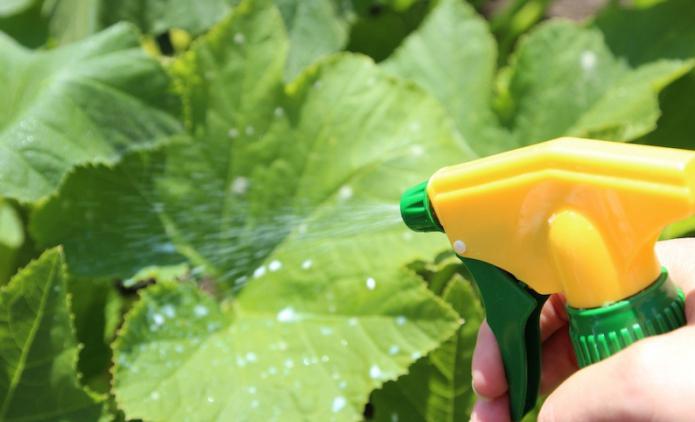
This type of fertilizer is versatile, which allows it to be used for various horticultural crops. Such baits are especially useful when growing cucumbers. In this case, the first spraying must be done already when the third leaf appears. Subsequently, several sprayings are carried out with an interval of 10 days. With the onset of active fruiting, fertilization stops. A nutrient solution for cucumbers is prepared by diluting two grams of calcium nitrate in one liter of water.
The prepared solution must be used immediately, as the effectiveness of saltpeter decreases in the light.
It is also recommended to fertilize tomato seedlings with saltpeter, and it is carried out a few days after it is planted in the ground. The use of this fertilizer allows you to protect tomato seedlings from rot and other diseases. Tomato processing has a prolonged effect, so the plants retain increased immunity for a long time and bear excellent fruit. As in the case with, when the first ovaries appear, spraying tomatoes with calcium nitrate should be stopped.

Calcium nitrate is very popular among summer residents who grow emerald lawn in their backyard. The introduction of this dressing allows you to ensure the most dense growth of grass, which has excellent density and is protected from various diseases.
When fertilizing the lawn, it is quite possible to get by with one spraying per month. It is possible to use a granular form of fertilizer, which eliminates the need to dilute the subcortex in water.
- For vegetables - before flowering, 20 grams of saltpeter per 10 liters of water.
- Strawberries - 25 grams per 10 liters of water.
- Shrubs and fruit trees- 30 grams per 10 liters of water.
Conclusion
Calcium nitrate is an inexpensive fertilizer that can significantly increase yields by suburban area. It is completely safe to use and with proper fertilization, the summer resident will be able to get an excellent harvest with excellent taste characteristics.
